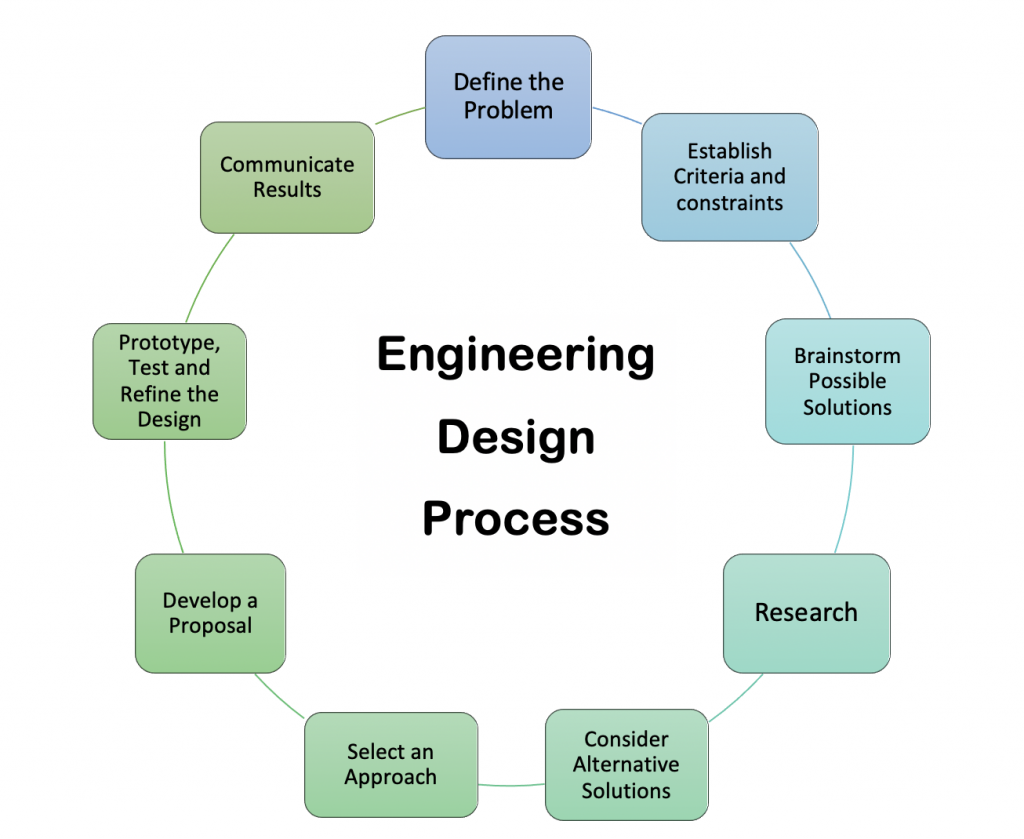1.2: Determining an Approach
Learning Objectives
- Identify the link between design process/thinking and technical communication
- Determine how to plan technical communication
How Can the Engineering Design Process Apply to Communication?
In the workplace, many of the communication tasks you perform are designed to solve a problem or improve a situation. Whether you are doing work for a client, for your employer, with your team, or for someone else, you will typically use some sort of design process to tackle and solve the problem. A clearly-articulated design process provides you with a clear, step-by-step plan for finding the best solution for your situation.
Take a moment to search the internet for the term “design process” and look at “images.” You will find many variations. Have a look at several of them and see if you can find a common pattern.
One commonality you will likely find in examining design process diagrams is this: the first step in designing any solution is to clearly define the problem. Figure 1.2.A. shows a typical design process, from problem definition to communicating the solution. Think about the kind of communication that each step of this process might entail.

You cannot begin to work on solutions until you have a clear definition of the problem and goals you want to achieve. This critical first stage of the design process requires that you effectively communicate with the “client” or whoever has the “problem” that needs solving. Poor communication at this stage can derail a project from the start. The rest of the process might seem linear and straightforward, but it is normal to “iterate” or return to previous steps several times throughout the process. Keep in mind that not all projects will go through all steps in this process; in addition, some projects might require additional steps not included in this process.
For our purposes, we will use Barry Hyman’s (2002) Problem Formulation model to clearly define a problem (pp. 40-54). Hyman’s Problem Formulation model consists of four elements:
- Need Statement
- Goal Statement
- Objectives
- Constraints
What Is Involved in Planning Technical Communication?
This model can apply to a communications task as well as more physical design tasks. How does this work?
Imagine your communications task as something that will solve a problem or improve a situation. Before you begin drafting this document or presentation, define the problem you want to solve with this document:
1. Need Statement: Consider what gave rise to the need to communicate. Does someone lack sufficient information to make a decision or take a position on an issue? Did someone request information? Is there some unsatisfactory situation that needs to be remedied by communicating with your audience? What specifically is unsatisfactory about it? Consider your audience.
Examples:
-
- A potential client lacks sufficient information on whether the solution I have proposed will be feasible, affordable, and effective.
- My instructor lacks sufficient examples of my written work to assign a grade for how well I met the course learning objectives.
2. Goal Statement: Consider your purpose in writing. What do you want your reader to do, think, or know? Do you want your reader to make a decision? Change their opinion or behaviour? Follow a course of action? What is your desired outcome? And what form and style of communication will best lead to that outcome?
Examples:
-
- Provide the client with enough information, in an effective and readable format, to make a decision.
- Provide my instructor with samples of my writing that demonstrate my achievement of the course learning objectives.
- Provide the client with enough information, in an effective and readable format, to make a decision.
3. Objectives: Consider the specifics of your message and your audience to determine what criteria you should meet. What form should it take? What content elements will you need to include? What kind of research will be required? What information does your audience want/need? What do they already know?
Examples:
-
- Review the client’s RFP to see what specific objectives it lists and how your proposal will be assessed.
- Review the Assignment Description and Grading Rubric for your assignment to determine specific requirements and learning objectives that your instructor will use to evaluate your work.
4. Constraints: Consider the constraints of this communication. What are the pass/fail conditions of this document? What conditions exist that present barriers or challenges to communication? How can you address them?
Examples:
-
- How much time is your audience willing to spend on this? How long can you make your document or presentation? (word length/time limit)
- What format and style do they require? Is there a Style Guide you must follow? A template you can use?
- How much time do you have to create it? Do you have a deadline? (due date)
- Are there requirements for using sources? (academic integrity rules)
Keep in mind that the document you produce is evaluated in terms of how well it responds to the “problem”; that is, how well it meets the overall goal and demonstrates achievement of specific objectives while abiding by constraints.
TRY IT
Exercise 1.2.A: Define a Problem
Think of a communication problem that you have recently experienced. It could be as simple as this: I have a doctor’s appointment and will miss a scheduled test for my ENGL 250 class.
Using your professor as your audience, apply the problem formulation model to this communication. Consider the following:
- What is your need or unsatisfactory situation?
- What is your goal?
- What are some measurable objectives you want to achieve?
- What are your constraints?
References & Attributions
References
Hyman, B. (2002). Problem formulation. In Fundamentals of engineering design (pp.40-54). Prentice Hall.
Attributions
Content on this page is adapted from Technical Writing Essentials by Suzan Last, which is licensed under a Creative Commons Attribution 4.0 International License, except where otherwise noted.

